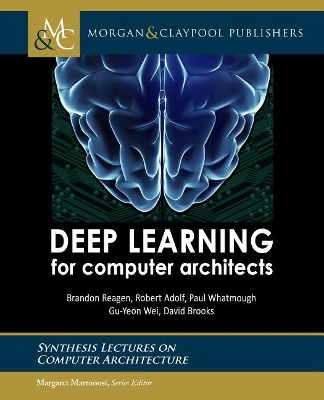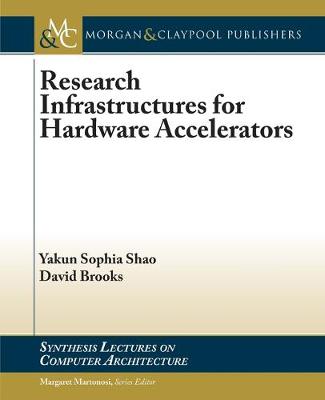Synthesis Lectures on Computer Architecture
3 total works
Deep Learning for Computer Architects
by Brandon Reagen, Robert Adolf, Paul Whatmough, Gu-Yeon Wei, and David Brooks
Published 22 August 2017
Machine learning, and specifically deep learning, has been hugely disruptive in many fields of computer science. The success of deep learning techniques in solving notoriously difficult classification and regression problems has resulted in their rapid adoption in solving real-world problems. The emergence of deep learning is widely attributed to a virtuous cycle whereby fundamental advancements in training deeper models were enabled by the availability of massive datasets and high-performance computer hardware.
This text serves as a primer for computer architects in a new and rapidly evolving field. We review how machine learning has evolved since its inception in the 1960s and track the key developments leading up to the emergence of the powerful deep learning techniques that emerged in the last decade. Next we review representative workloads, including the most commonly used datasets and seminal networks across a variety of domains. In addition to discussing the workloads themselves, we also detail the most popular deep learning tools and show how aspiring practitioners can use the tools with the workloads to characterize and optimize DNNs.
The remainder of the book is dedicated to the design and optimization of hardware and architectures for machine learning. As high-performance hardware was so instrumental in the success of machine learning becoming a practical solution, this chapter recounts a variety of optimizations proposed recently to further improve future designs. Finally, we present a review of recent research published in the area as well as a taxonomy to help readers understand how various contributions fall in context.
This text serves as a primer for computer architects in a new and rapidly evolving field. We review how machine learning has evolved since its inception in the 1960s and track the key developments leading up to the emergence of the powerful deep learning techniques that emerged in the last decade. Next we review representative workloads, including the most commonly used datasets and seminal networks across a variety of domains. In addition to discussing the workloads themselves, we also detail the most popular deep learning tools and show how aspiring practitioners can use the tools with the workloads to characterize and optimize DNNs.
The remainder of the book is dedicated to the design and optimization of hardware and architectures for machine learning. As high-performance hardware was so instrumental in the success of machine learning becoming a practical solution, this chapter recounts a variety of optimizations proposed recently to further improve future designs. Finally, we present a review of recent research published in the area as well as a taxonomy to help readers understand how various contributions fall in context.
Research Infrastructures for Hardware Accelerators
by Yakun Sophia Shao and David Brooks
Published 1 November 2015
Hardware acceleration in the form of customized datapath and control circuitry tuned to specific applications has gained popularity for its promise to utilize transistors more efficiently. Historically, the computer architecture community has focused on general-purpose processors, and extensive research infrastructure has been developed to support research efforts in this domain. Envisioning future computing systems with a diverse set of general-purpose cores and accelerators, computer architects must add accelerator-related research infrastructures to their toolboxes to explore future heterogeneous systems. This book serves as a primer for the field, as an overview of the vast literature on accelerator architectures and their design flows, and as a resource guidebook for researchers working in related areas.


